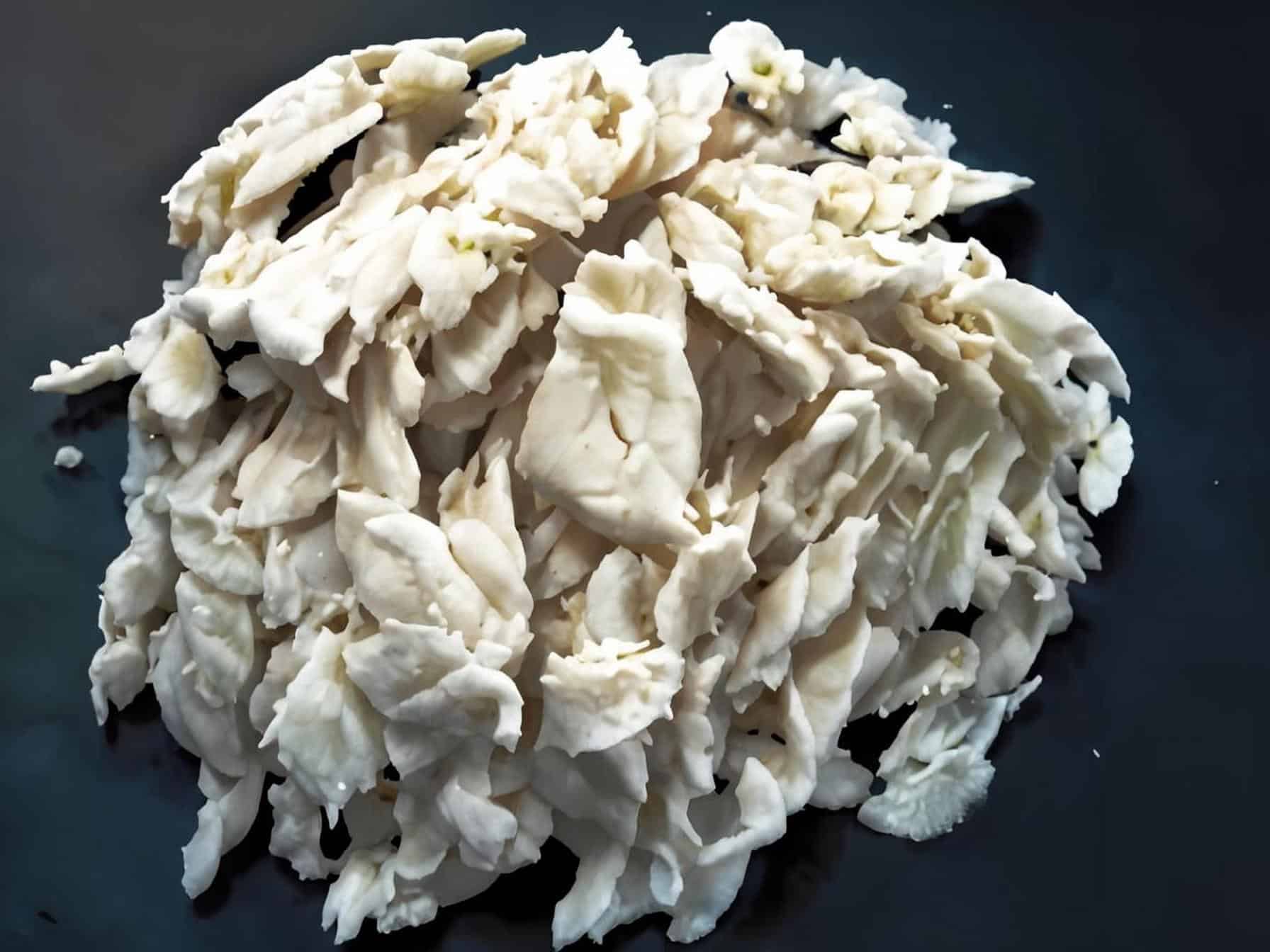Epoxy resin is a polymer compound containing two or more epoxy groups in the molecule and with a low relative molecular mass. There are many varieties and brands of epoxy resin, but bisphenol A glycidyl ether epoxy resin, commonly known as bisphenol A epoxy resin, is the most important category, accounting for 90% of the total epoxy resin production.
Bisphenol A type epoxy resin is also called general-purpose epoxy resin and standard epoxy resin. It is named E-type epoxy resin in China. It is formed by the condensation polymerization of bisphenol (BPA or DPP) and epichlorohydrin (ECH) in the presence of sodium hydroxide. Depending on the ratio of raw materials, reaction conditions and methods used, viscous liquids with low molecular weight and solids with high molecular weight and high softening point with different degrees of polymerization can be produced. The average relative molecular mass is 300~7000. The appearance is almost colorless or light yellow transparent viscous liquid or flaky brittle solid. Epoxy resin itself is a thermoplastic linear polymer. When heated, the viscosity of the liquid resin becomes lower and the solid resin softens or melts. Soluble in acetone, methyl ethyl ketone, cyclohexanone, ethyl acetate, benzene, toluene, xylene, absolute ethanol, ethylene glycol and other organic solvents.

The chemical name of hydrogenated bisphenol A-type epoxy resin is hydrogenated bisphenol A diglycidyl ether, which is obtained by the polycondensation of hexahydrobisphenol A obtained by hydrogenating bisphenol A and epichlorohydrin under the catalysis of sodium hydroxide. It is an epoxy resin with very low viscosity, long gel time and good weather resistance.
The chemical name of bisphenol F epoxy resin is bisphenol F diglycidyl ether, referred to as DGEBF or BPF. It is a colorless or light yellow transparent viscous liquid produced by reacting phenol and formaldehyde under an acidic catalyst to form bisphenol F, and then performing a polycondensation reaction with epichlorohydrin under the catalysis of sodium hydroxide.
The chemical name of bisphenol S epoxy resin is bisphenol S diglycidyl ether, abbreviated as BPS or KGEBS. It is produced from bisphenol S and epoxy propane under the catalysis of sodium hydroxide. Bisphenol S-type epoxy resin has high heat resistance, and its heat distortion temperature is 60 to 700C higher than bisphenol A epoxy resin. The cured product is stable and has good solvent resistance.
Bisphenol P epoxy resin is produced by synthesizing bisphenol P using 3-chloropropene and phenol as the main raw materials, and then condensing it with epichlorohydrin under the catalysis of sodium hydroxide. Bisphenol P epoxy resin has large molecular chain flexibility, good fluidity at low temperatures, lower viscosity than bisphenol A epoxy resin, and higher compressive strength and impact strength than bisphenol A epoxy resin.
Phenolic epoxy resins mainly include phenol novolac ester epoxy resin and o-cresol novolac epoxy resin, as well as resorcinol-type phenolic epoxy resin. In addition, tetraphenol ethane epoxy resin also belongs to phenolic epoxy resin. Phenol novolac epoxy resin (EPN) is a novolac resin obtained by the polycondensation reaction of phenol and formaldehyde in an acidic medium, and then polycondensed with excess epichlorohydrin in the presence of sodium hydroxide. It is a brownish-yellow viscous liquid or semi-solid.
O-cresol novolac epoxy resin is a linear o-cresol novolac epoxy resin obtained by the condensation of o-cresol and formaldehyde, and then reacted with epichlorohydrin in the presence of sodium hydroxide. A yellow to amber solid obtained after multi-step treatment.
The chemical name of epoxy resorcinol formaldehyde resin is resorcinol formaldehyde tetraglycidyl ether. It is a four-functional phenolic resin produced by reacting resorcin and formaldehyde with oxalic acid as a catalyst. It is an orange-yellow viscous liquid obtained by condensation with epichlorohydrin in the presence of sodium hydroxide.
The chemical name of tetraphenol ethane epoxy resin is tetraphenol ethane glycidyl ether (PGEE). It is produced by the reaction of phenol and glyoxal in the presence of an acidic catalyst, and then reacts with epichlorohydrin under the catalysis of sodium hydroxide.
Naphthol novolac epoxy resin (EEPN) is produced by condensation polymerization of a-naphthol and formaldehyde solution to synthesize linear phenolic resin, which is then reacted with epichlorohydrin under the catalysis of sodium hydroxide.
Due to the introduction of fluorine atoms, fluorinated epoxy resin has a dense molecular structure, and carbon and fluorine atoms are closely arranged around the resin main chain. Therefore, the surface tension, friction coefficient and refractive index are very low, and it has excellent corrosion resistance, wear resistance, heat resistance, pollution resistance and durability. However, the price is too high and cannot be used for general purposes.
With the continuous development of high-tech and technology. In recent years, the modification of epoxy resin has continued to deepen, and methods such as interpenetrating networks, chemical copolymerization, and nanoparticle toughening have been widely used. There are also more and more varieties of high-performance adhesives formulated with epoxy resin.
There are many varieties of epoxy resin adhesives, and their classification methods and classification indicators have not yet been unified. Usually classified according to the following methods. Classification according to the form of adhesive: such as solvent-free adhesives, (organic) solvent-based adhesives, water-based adhesives (which can be divided into water-emulsion type and water-soluble type), paste adhesives, film-like adhesives (epoxy film), etc.
Classified by curing conditions: cold-curing glue (non-heating curing glue). It is further divided into low-temperature curing glue, with a curing temperature of less than 15°C; room temperature curing glue, with a curing temperature of 15 to 40°C.
Thermal curing glue can be divided into: medium temperature curing glue, the curing temperature is about 80~120°C; high temperature curing glue, the curing temperature is >150°C. Other methods of curing glue, such as light-curing glue, wet surface and water-curing glue, latent curing glue, etc.
Classification according to bonding strength: Structural adhesives have high shear and tensile strength, and should also have high uneven tear-off strength so that the bonded joints can withstand loads such as vibration, fatigue, and impact over a long period of time. At the same time, it should also have high heat resistance and weather resistance; the secondary stress structural adhesive can withstand medium loads, usually with a shear strength of 17-25Mpa and an uneven tear-off strength of 20-50kN/m. Non-structural adhesive, that is, general-purpose adhesive. Its room temperature strength is relatively high, but as the temperature increases, the bonding strength decreases rapidly. It can only be used on parts that are not subject to much force.
Classified by use: general adhesives, special adhesives. Such as high temperature resistant glue (use temperature ≥150°C), low temperature resistant glue (can withstand temperatures of -50°C or lower), strain glue (used for pasting strain gauges), conductive glue, sealant (used for vacuum seals and mechanical seals) , optical glue (colorless and transparent, resistant to light aging, refractive index matches optical parts), corrosion-resistant glue, structural glue, etc. It can also be classified according to the type of curing agent, such as amine cured epoxy glue, acid anhydride cured glue, etc. It can also be divided into two-component glue and one-component glue, pure epoxy glue and modified epoxy glue.
More information or free samples or price quotations, please contact us via email: sales@yqxpolymer.com , or voice to us at: +86-28-8411-1861.
Some pictures and texts are reproduced from the Internet, and the copyright belongs to the original author. If there is any infringement, please contact us to delete.

